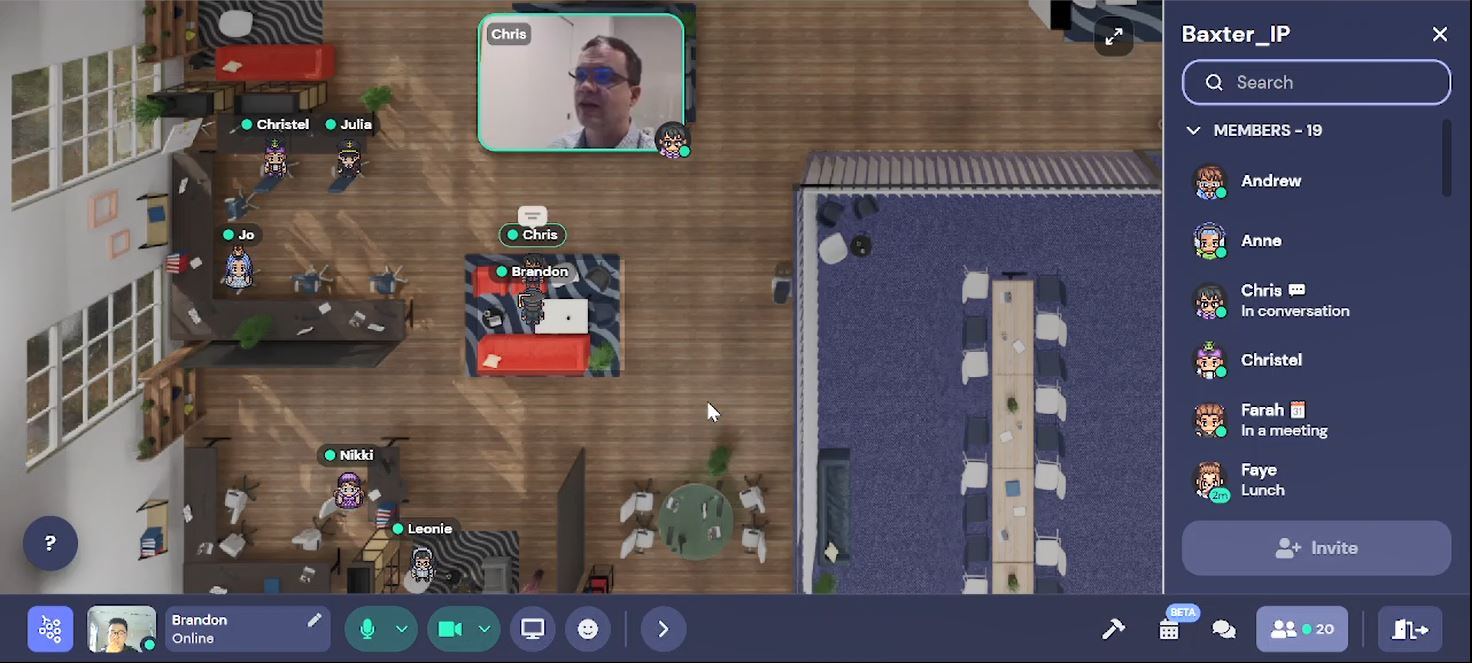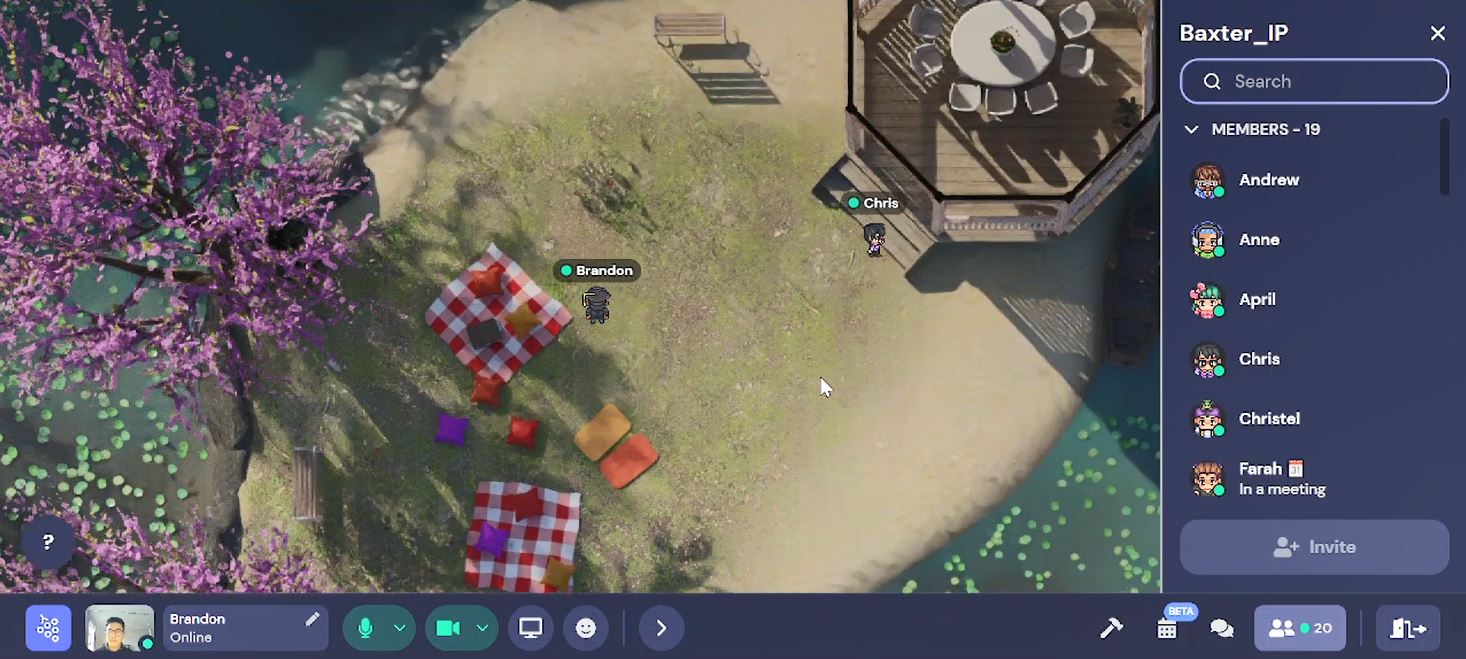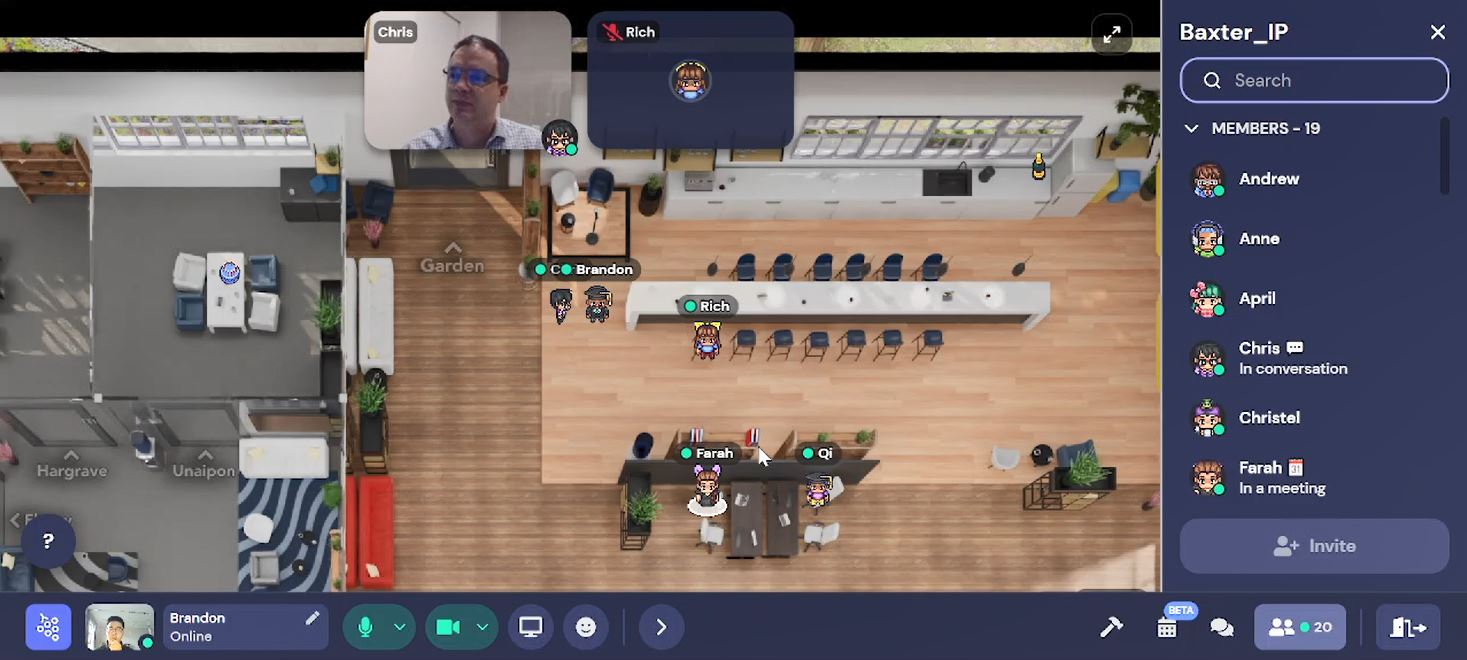As the potential of shared virtual work environments continues to be bandied about, one local law firm has recently introduced a browser-based system to enhance the hybrid working experience, and to streamline videoconferencing and other communications. It is strangely compelling.
BaxterIP is an intellectual property, patent, and trade mark law firm with attorneys across Sydney and Melbourne. The company has begun collaborating through a bespoke virtual office in the browser-based application Gather. The application is used to streamline internal company communications through a proximity-based video call system.
Set in a 2D pixel art environment reminiscent of handheld Pokémon games, the gridded virtual office features desks, meeting rooms, private conversation areas, a garden area, and even a desk for a fulltime receptionist. An external designer was hired to design the virtual space after consulting with staff about its features.
Employees move their own customisable character and can engage with colleagues by directly approaching their characters. The proximity chat has a range of six squares, meaning a person’s audio and video input will fade in and fade out as your character approached them and then moves away.

BaxterIP managing director Chris Baxter said that the system helped make employees feel connected to one another, even across offices in Sydney and Melbourne.
“The intangible benefit is that when we’re standing here, we feel like we’re in the office. You feel like you’re part of the team, especially seeing the team working around you or in meetings,” Mr Baxter said.
“As you’re walking around the office, coming into range and out of range of colleagues, that promotes natural water cooler talk, collaboration, and opportunities to discuss things we’re working on together.
“We’ve got the team giving it an average score of nine out of ten or a bit over, and for us it has been really transformative in terms of close collaboration and the feeling of working together, particularly between different offices.”
Mr Baxter said that prior to implementing Gather, remote working employees found it difficult to ask quick questions due to uncertainty around availability. With the new system, colleagues can set their availability by moving their character between their virtual desk, a private area, which limits the proximity chat feature, or a more casual location.

He added that the ease of access to other colleagues improved the efficiency of work done.
“Because you’re interacting with different people all the time things are getting done much faster. For the administrative team it’s been really helpful in getting super quick access to the attorneys they’re supporting, and for attorney’s reciprocal access to their admin.”
“You can still send an email or a message on slack but just jumping straight into a video conference can be faster. A lot of general matter related communications are still done by email, but having said that it’s often much easier to pick up the phone or jump into a video conference and talk something complex through.”
Gather is a US-based firm with the monthly subscription cost of $7 per user able to accommodate up to 500 concurrent users. Small groups or those looking to trial the software can do so for free, on customisable environments hosting up to 25 concurrent users.
Other potential features include accessing webpages from inside Gather, using shared whiteboards, accessing shared documents, and playing games.
At first Mr Baxter invited the team to trial Gather for an hour. This quickly led to another trial over the course of a morning before turning to days, and now a fulltime feature of the workday.

The company is investigating the possibility of including a link on their website for anybody to visit the office through their web browser. Mr Baxter said that an external IP attorney visiting the virtual office enjoyed the experience so much they ran around the whole office.
“Obviously she was having fun, but it was a bit of a disruption as one of my colleagues was chasing her around,” Mr Baxter shared.
When asked about the risk of ‘zoom-bombing’, Mr Baxter noted that even if an unwanted user entered the virtual office, there isn’t much they could do, besides disturbing team members. There is also a function to eject users from the office if required.
Dr Catriona Wallace, executive director of the AI research consultancy Gradient Institute, said that the use of shared virtual environments in Australia is in its early stages but could become mainstream within five to ten years. Gradient is working with the New South Wales state government to produce a metaverse strategy.
“When it comes to Australia, there are no clear statistics on the number of Australians that are using or experiencing the metaverse, but what we do know from a World Economic Forum, research paper, is that there is a 44 per cent of Australians know about the metaverse and 36 per cent of Australians who know about the metaverse have a positive orientation towards it. It’s quite a bit lower than the world average,” Dr Wallace said.
For Dr Wallace, metaverse is a concept defined as a fully immersive virtual world where people go to make social connections, which does not necessarily use virtual reality or 3D graphics. In the coming years, Dr Wallace believes it is important for the government to support capability building in this area to ensure Australia does not miss the potential benefits of metaverse technology.
Do you know more? Contact James Riley via Email.

